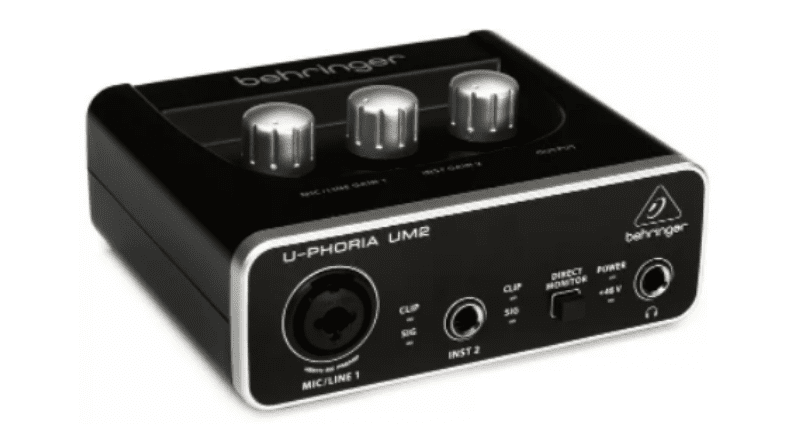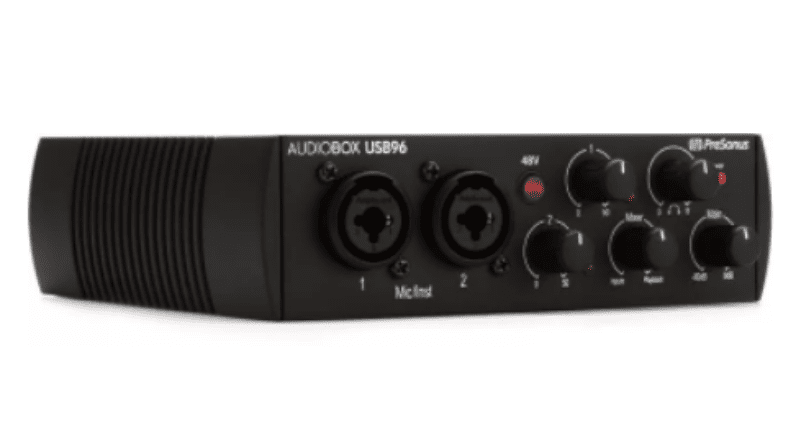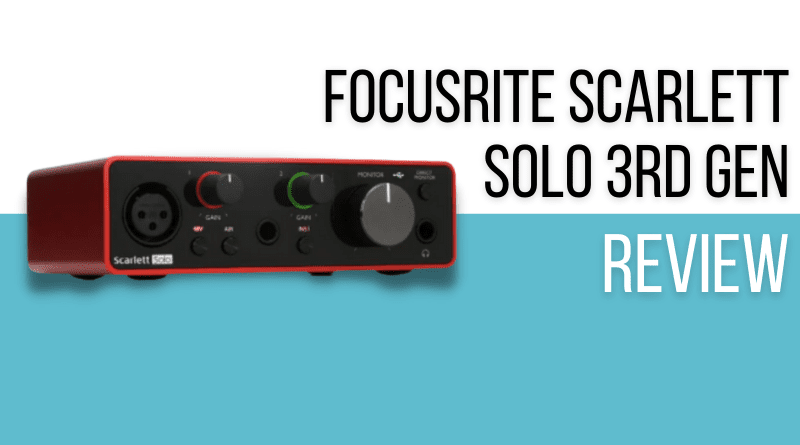Founded in 1985 by the legendary Rupert Neve, Focusrite has built a solid reputation as one of the top audio companies in the world. With the release of the third-generation Scarlet audio interfaces, this British company reinforces its commitment to providing affordable, intuitive, and quality audio products for beginners and professionals alike.
Scarlet interfaces are popular among beginner producers, musicians, podcasters, and other professionals that are budget-conscious. These interfaces are well built, compact, and deliver excellent quality for the money.
The Focusrite Scarlett Solo 3rd gen is the smallest and simplest in the series, and also the most affordable. This interface is as portable as it gets and offers a fantastic set of features for this price range and size.
Read more about our review process.
Contents
Who Is This For?
The Focusrite Scarlett Solo 3rd is a good buy for those looking to get started with recording. Because of its low price, portability, and features, this audio interface is a nice choice for folks on a tight budget, or those looking to start out in the world of producing, mixing, and audio work in general.
The Scarlett Solo is also a good option for songwriters looking to work on or demo their ideas while keeping the focus on the writing and not getting too caught up on the audio processing.
Appearance / Features / Controls
The Scarlett Solo 3rd generation has a slick appearance and an intuitive design. With few knobs and controls, it is easy to understand how to use it before even plugging it in.
This bus-powered audio interface features low latency, a sample rate of up to 192 kHz, and an optimized preamp gain structure. In other words, all you need to get started with recording and with excellent quality for such a low price.
One glance at the Scarlett Solo and it becomes apparent why this interface is a good choice for songwriters. With one XLR input and one Hi-Z instrument input that can handle hot pickups, this is a great plug-and-play tool to quickly record ideas so you can further develop them.
Focusrite also included the Air circuit via a switch on the Scarlett Solo. This circuit models the company’s famous ISA console transformer to give you a brighter and more open sound. It is conveniently located right next to the 48 V phantom power button, and right below the gain knob for input 1.
Right next to the input section and its two gain controls for each input, you get a Big monitor knob. As the name implies, this controls how much volume you send to your monitors or headphones. All in all, there are only three knobs on this 2-channel interface, making it as simple as it can possibly be. In our first inspection, it became evident that the knobs were sturdy and with a nice feel as we turned them.
The rear of this interface is even simpler than the front. Here you get two 1/4″ monitor outputs (right and left) as well as the USB-C port that connects to your computer or iPad via the included USB cable.
The Scarlet solo is compatible with both Mac and PC. Focusrite also added compatibility with an iPad Pro for this third-generation series. This may appeal to younger folks that are getting into recording and prefer to work out of an iPad.
Performance/Sound
To get right down to business, we set up a condenser mic, connected it to input 1, activated the 48 V phantom power button, plugged in a Les Paul guitar on the instrument input, and fired up Logic X to start creating recording some ideas.
The entire setup process happened fast and had us ready to lay down riffs and lyrics in a heartbeat. In other words, you won’t be bogged down by complicated setups or configurations. Just plug in and start creating!
After recording some chords with vocal mumbling to a potential melody, we wanted to see how far we could take the gain in the inputs. We dialed both of them all the way up, but got the immediate warning that it was too hot because the halo indicators on each gain knob turned red.
We then back down a bit, making the halo indicator turn amber. Finally, it turned green, indicating that we had reached the ideal level at which to have the gain.
After recording a few ideas, we were happy with the results. The sound was transparent and with no apparent noise, thanks to the Focusrite low distortion preamps.
We continued to record ideas and then switched on the Air mode to get a nice boost on the high end. Naturally, it will be a matter of taste regarding when to engage the Air function, but it is a good asset to have.
Although we used Logic X as our daw, the Scarlett Solo 3rd Gen comes with Ableton Live Lite, as well as the Focusrite Hitmaker Expansion software bundle. This bundle includes plug-ins like XLN Audio Addictive Drums 2, Relab LX4080 Essentials, Softtube Marshall Silver Jubilee 2555, and more. In short, everything you need to start getting into the world of audio production.
Other Interfaces to Consider
Behringer U-Phoria UM2

If you are looking for a 2-input audio interface that is truly affordable, the Behringer U-Phoria UM2 is a good choice. For less than fifty dollars you can get started with audio production with a small interface that comes with phantom power, XENYX preamps, and is compatible with Mac and PC.
PreSonus AudioBox USB 96

This 2-channel USB audio interface features up to 24-bit at 96 kHz recording and comes loaded with PreSonus Studio One Artist Daw Software. In short, you can record up to 2 inputs simultaneously with low latency and then process them in PreSonus’ own DAW. A nice choice for songwriters and beginners alike.
Final thoughts
The Focusrite Scarlett Solo 3rd Gen is a great value. With two inputs, a small form factor, low latency, clean preamps, and bundled software, this interface is a great first step into audio production.
Its intuitive design and affordable price appeal to songwriters, podcasters, and others looking to jump into music production in style.


